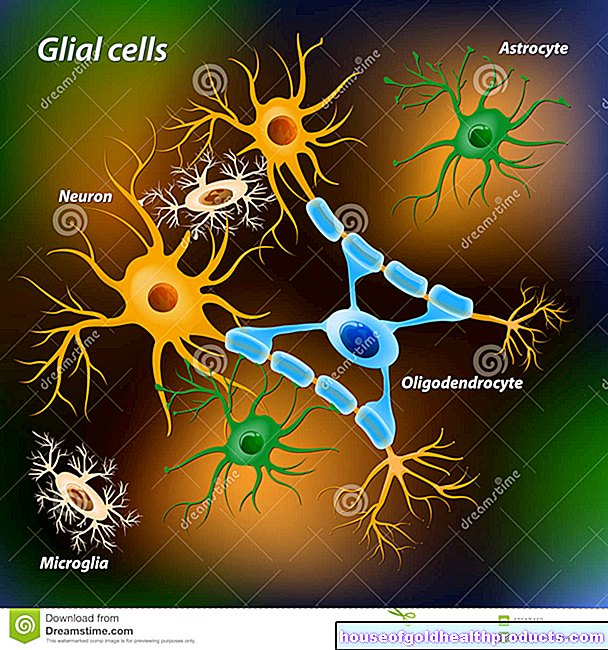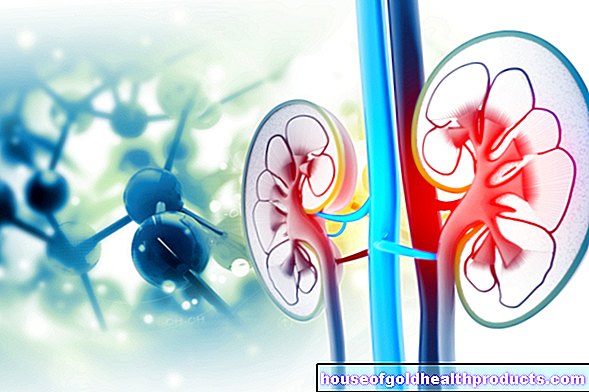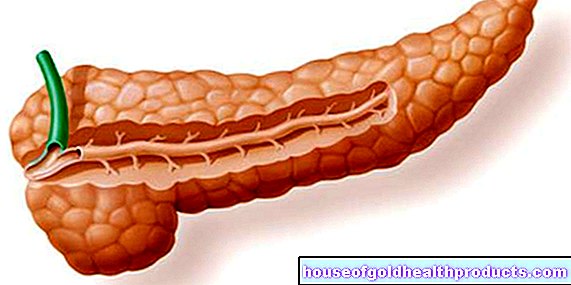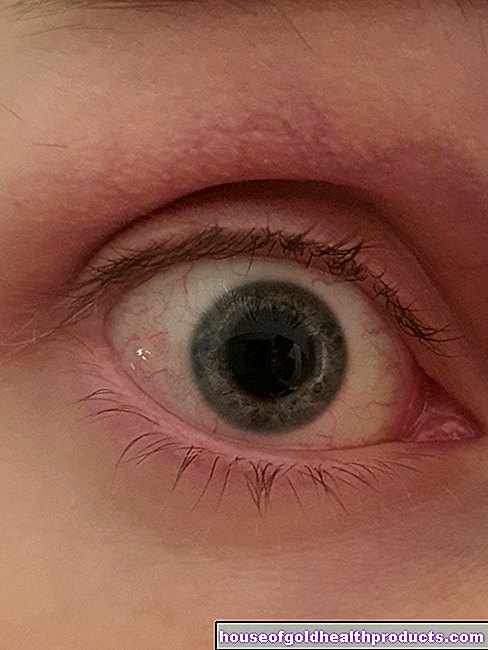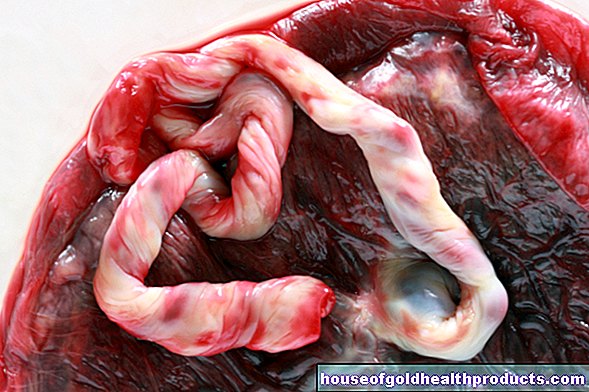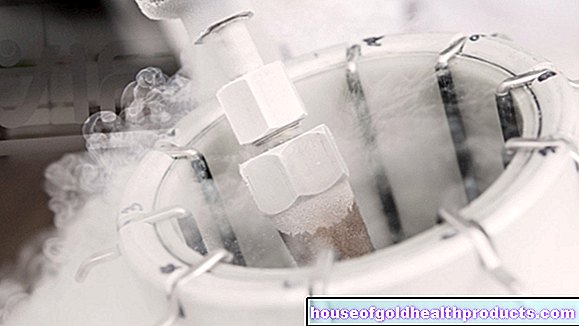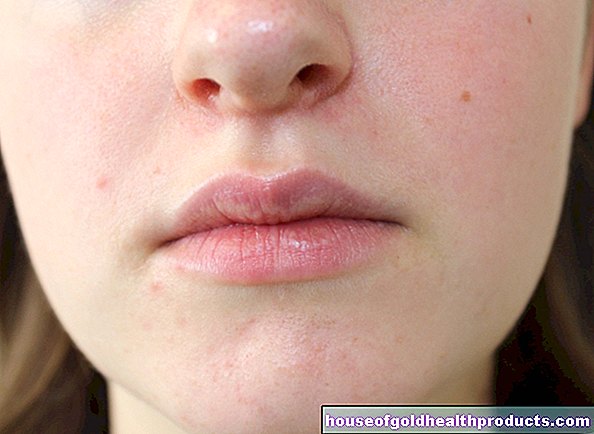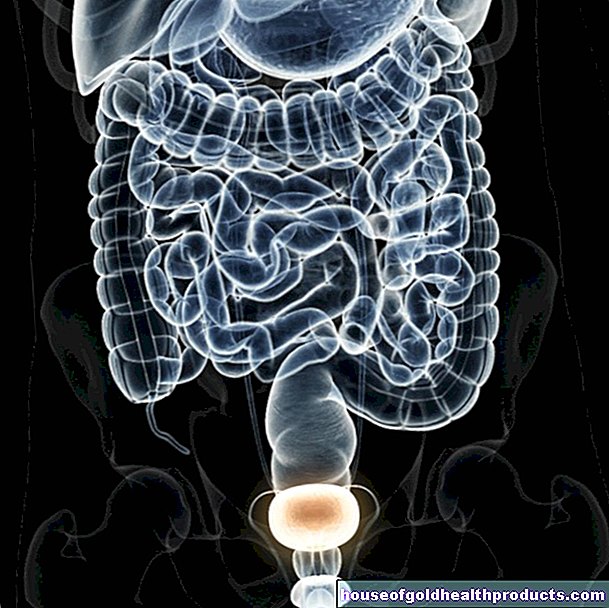Melperon
Updated on All content is checked by medical journalists.Melperon belongs to the group of antipsychotics, but has a rather weak antipsychotic effect. For this reason, it is mainly used for sleep disorders, confusion and restlessness. Because of its good tolerability, Melperon is used particularly in older patients. Here you can read everything interesting about the active ingredient, its mode of action, application and side effects.
This is how Melperon works
Melperon is a representative of the so-called antipsychotics. Its antipsychotic (= fighting the loss of reality) effect is rather weak. Instead, it has a more calming and dampening effect.
Antipsychotics
Antipsychotics (neuroleptics) are active ingredients that have an antipsychotic and sometimes calming effect. They are therefore suitable for the treatment of hallucinations and delusions. Such symptoms are often based on mental disorders such as schizophrenia or mania.
Experts suspect that in schizophrenia symptoms such as hallucinations and delusions are based on an increased concentration of the messenger substance dopamine in certain areas of the brain (dopamine hypothesis). Antipsychotics prevent the neurotransmitter dopamine from docking with its receptor. This is an attempt to normalize the excessive effects of dopamine. However, the full mechanism of action of antipsychotics is not yet fully understood.
The older active ingredients (first-generation antipsychotics, e.g. Melperon) still have a rather unspecific effect in the brain. As a side effect, they therefore also influence the dopamine-controlled extrapyramidal nerve pathways. The consequences are so-called extrapyramidal disorders (EPS) such as restlessness, involuntary movements, cramps, muscle rigidity and gait disorders.
The newer atypical antipsychotics (second generation antipsychotics) have a more targeted effect and therefore hardly show these side effects.
Uptake, breakdown and excretion
Once ingested, Melperon is quickly and completely absorbed into the blood. The highest blood levels are reached after one to one and a half hours.
The active ingredient is primarily broken down by the liver. A maximum of ten percent of the administered amount of Melperon leaves the body unchanged with the urine. After a single dose, about half of the active ingredient is excreted after four to six hours (half-life).
When is Melperon used?
Melperon is used in the following cases:
- sleep disorders
- States of confusion
- Restlessness with an urge to move and states of excitement, especially in patients with psychoses, schizophrenia, dementia, certain neuroses and alcoholism
Long-term use is usually required.
Because of its good tolerability, Melperon is often used in older patients.
This is how Melperon is used
Melperon is often used as a tablet or oral solution (Melperon juice). Depending on the severity of the disease, dosages of 25 to 200 milligrams of Melperon are usually administered daily, which are usually divided into several doses.
Therapy is usually started with a low dose of Melperon, which is then slowly increased until the effect is sufficient. Sometimes, however, the desired effect only occurs two to three weeks after the start of treatment. The maximum daily dose of melperon is 400 milligrams.
It is taken after meals or before going to bed if sleep disorders also need to be treated. It is important that the drug is not swallowed with coffee, tea or milk, as this inhibits the absorption of the active ingredient.
What are the side effects of Melperon?
Basically, a therapeutic Melperon dosage has little or no effect on breathing, circulation, digestion, urine excretion or liver function.
At the beginning of treatment and at higher doses, tiredness may occur, but this is usually also desirable. In addition, the active ingredient can lead to low blood pressure, which manifests itself in dizziness and weakness, especially when getting up from a lying or sitting position.
Depending on the dose and the individual predisposition, the extrapyramidal disorders (EPS) already mentioned can occur as further side effects. This can be recognized by cramping of the muscles, tremors, muscle stiffness and agitation (similar to the clinical picture of Parkinson's disease).
If you suspect EPS side effects, have them clarified by your doctor.
Because the active substance melperon is broken down in the liver, this can temporarily lead to an increase in liver enzyme values, problems with the drainage of the bile or jaundice. Changes in the blood count are also known to be side effects.
What should be considered when taking Melperon?
Contraindications
Melperon must not be used in:
- severe liver dysfunction
- Neuroleptic Malignant Syndrome (NMS) in the past (NMS is a rare but life-threatening side effect of neuroleptics)
- acute poisoning with alcohol, central depressant agents or opiates
- Hypersensitivity to the active substance or any of the other components of the drug
Interactions
If you also take other depressant drugs (sleeping pills, painkillers, psychotropic drugs, active ingredients against allergies) or alcohol, the depressant effect can be increased. The effects of antihypertensive drugs can also be enhanced by Melperon.
Melperon can cause certain changes in the heart rhythm, so-called QT segment lengthening. Therefore, caution is advised when combining other drugs that also affect the heart rhythm (e.g. certain antibiotics and antiallergic agents) - the risk of serious side effects must be weighed against the potential benefit of the treatment by a doctor.
The same applies to patients with existing heart disease. With the help of an electrocardiogram (ECG) before starting Melperon therapy and after reaching the target dose, the risk of QT segment lengthening can be excluded and monitored.
Melperon is an inhibitor of the enzyme CYP2D6. Other drugs, which are also metabolized via CYP2D6, can therefore be influenced in their effect (e.g. many antidepressants or the pain reliever tramadol).
Age restriction
Melperon is approved from the age of twelve.
pregnancy and breast feeding period
Pregnant and breastfeeding women should not take Melperon due to insufficient data. Animal studies did not show any evidence of a teratogenic effect, but it is known that the active ingredient can cross the placenta.
It can be assumed that melperon is also excreted in breast milk. This exposes the breast-fed child to the active ingredient, although potential risks and long-term consequences cannot be ruled out.
Promethazine is a tried and tested active ingredient in restless and agitated states. For sleep disorders also amitriptyline and diphenhydramine.
This is how you get drugs with the active ingredient melperon
Melperon requires a prescription in Germany and Austria in every dosage and pack size. Melperon juice (oral solution) is only available in Germany.
The active ingredient is not at all on the market in Switzerland.
How long has Melperon been known?
The active ingredient melperon was first marketed in Germany in 1975. Since the expiry of patent protection, several generics with the active ingredient melperone have been added to the pharmaceutical market.
Tags: laboratory values foot care Diseases

